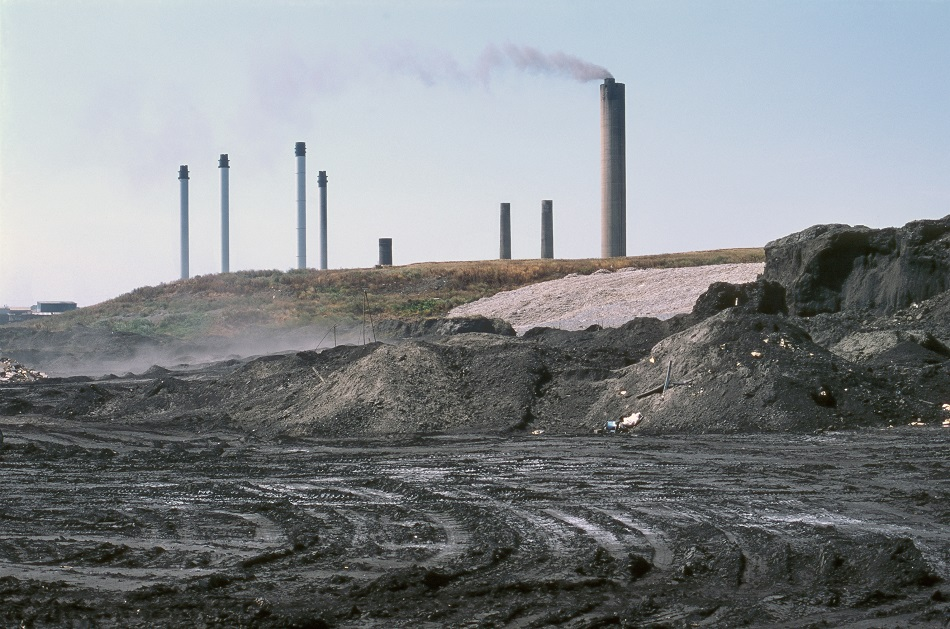Article Updated on 17 March 2021

Image Credit: Silent Corners/Shutterstock.com
Thermal power stations produce electricity through coal combustion, but the process also results in huge amounts of waste known as fly ash, and as our energy demands grow, so does the volume of waste generated.
Around 70% of fly ash produced worldwide is disposed of as waste; this waste is highly contaminating because of toxic trace elements contained within coal, which accumulate as the organic content of the coal is eliminated.
What’s Fly Ash?
Fly ash is small, dark flecks of ash produced by burning coal; it is composed of particulates that are driven out of coal-fired boilers into the air with flue gases.
As global energy needs to increase to keep up with our ever-changing technology, the demand is met by burning fossil fuels in power plants. This combustion process releases gaseous and particulate pollution.
Around 20% of ash – known as bottom ash or slag – is left at the base of the boiler along with incompletely burned organic matter. The remaining fly ash is carried through the boiler and eventually discharged as either a dry powder or wet slurry.
In modern coal-fired power stations, the fly ash can be captured by electrostatic precipitators, devices that remove suspended dust particles from gas/exhaust using a high-voltage electrostatic charge and collect the particles on charged plates. Otherwise, it’s removed using a particulate filtration system before it reaches the chimney.
The chemical composition of fly ash depends on many factors including coal composition and quality, degree of pulverization, combustion technique and boiler operation techniques. So, depending on the coal burned, fly ash may contain silicon dioxide, aluminum oxide, and calcium oxide. It might also contain several other elements such as beryllium, boron, cadmium, chromium, cobalt, lead, manganese, mercury, molybdenum, selenium, strontium, thallium and vanadium. Many of these are trace elements and are present in minute amounts; average concentrations are less than 100 parts per million (ppm).
Elemental Analysis
Elemental analysis of fly ash shows it contains rare earth metals, toxic elements, and radionuclides. Samples are often crushed to a fine powder and mixed with cellulose, which is then ground to form a homogenous mixture and pressed to form pellets, which can be analyzed for their spectra.
Techniques employed often include x-ray fluorescence (XRF) spectroscopy, inductively coupled plasma-optical emission spectrometer/mass spectrometry (ICP-OES/MS), laser ablation inductively coupled plasma mass spectrometry (LA-ICP-MS) and instrumental neutron activation analysis (INAA).
Various studies have analyzed fly ash from different locations around the world, for example:
- Matla coal power station in Mpumalanga province in South Africa: Samples were analyzed using XRF, ICP-OES/MS, and LA-IPC-MS: it revealed 54 elements including 16 rare earth metals and several heavy metals including cadmium, lead, arsenic, strontium, uranium, and thorium.
- Yatağan power plant in Turkey: Fly ash samples were collected by an electrostatic precipitator and analyzed using XRF. The analysis quantified five trace elements – arsenic, strontium, neodymium, barium, and molybdenum.
Another study that conducted trace element analysis of fly ash samples and solid samples using energy-dispersive x-ray fluorescence (EDXRF) found 14 elements; potassium, calcium, titanium, vanadium, chromium, manganese, iron, cobalt, zinc, selenium, strontium, lead and rubidium. Furthermore, it found that there was no real difference between fly ash samples and soil samples and as a result fly ash can be used as soil manure without any adverse effect on plants.
Conclusion
There are recognized health hazards and environmental impacts associated with fly ash from thermal power plants as a result of the mobilization of trace elements, which become more concentrated as the organic content of the coal disappears.
Quantifying the concentration of trace elements in fly ash can be useful in developing a means of lessening the environmental pollution associated with it and the different applications of fly ash, such as cement manufacture, wastewater treatment, lightweight contraction aggregate, ceramic production, and it being a secondary source in the recovery of valuable elements.
Sources and Further Reading
Disclaimer: The views expressed here are those of the author expressed in their private capacity and do not necessarily represent the views of AZoM.com Limited T/A AZoNetwork the owner and operator of this website. This disclaimer forms part of the Terms and conditions of use of this website.